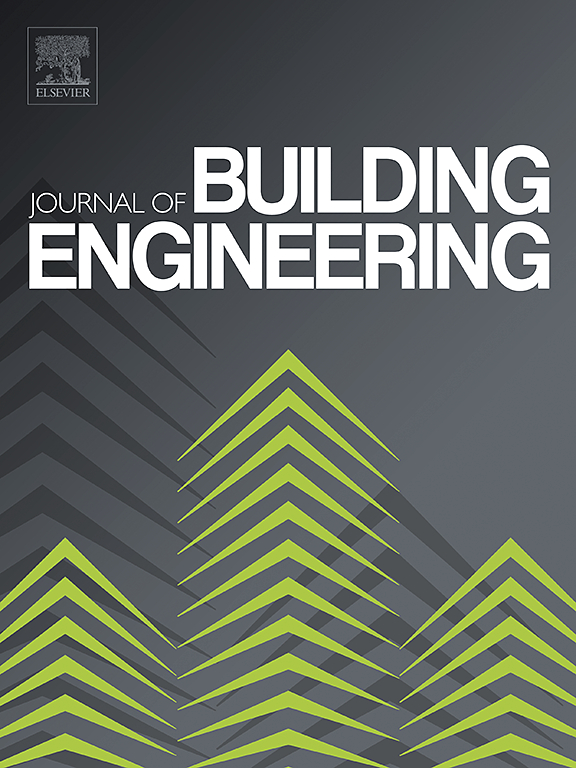Direct displacement-based design and seismic performance evaluation of post-tensioned steel-timber hybrid frames equipped with braces
IF 6.7
2区 工程技术
Q1 CONSTRUCTION & BUILDING TECHNOLOGY
引用次数: 0
Abstract
Post-tensioned (PT) low-damage mass timber frames provide one of the promising lateral load resisting systems (LLRSs) for buildings to obtain both environmental benefits and seismic resilience. As an improved solution to conventional PT timber frames, PT steel-timber hybrid (PTSTH) frames equipped with braces were proposed by the authors and have been examined through experimental testing. This study further develops a seismic design method to implement this new LLRS for mass timber structures. The direct displacement-based design (DDBD) was adopted to fulfill this target. Different key aspects in the DDBD were suggested considering the characteristics of PTSTH frames. Six prototype buildings, having four, six, and eight stories and two types of braces (additional damping and stiffness (ADAS) braces and tension-only braces (TOBs)), were designed using the proposed method. Both pushover and non-linear time history analyses were conducted to examine the performance of the buildings. The results showed that all structures subjected to minor, moderate, or major earthquakes fulfilled the maximum inter-story drift (maxISD) limits for the intermediate occupancy (IO), life safety (LS), and collapse prevention (CP) levels, respectively. Using Sklar's theorem, both maxISD and residual inter-story drift (RISD) were considered when calculating the structural failure probability and reliability index. The calculated annual reliability index for PTSTH frames with braces ranged from 2.6 to 3.1 for IO, 3.3 to 3.6 for LS, and 3.6 to 3.8 for CP.带支撑后张钢-木混合框架直接位移设计及抗震性能评价
后张(PT)低损伤大质量木结构框架提供了一个有前途的横向荷载抵抗系统(LLRSs)为建筑物获得环境效益和抗震弹性。作为传统PT木结构框架的改进方案,作者提出了带支撑的PT钢-木混合框架,并进行了试验验证。本研究进一步发展了一种抗震设计方法,以实现这种新的大型木结构的LLRS。采用直接基于位移的设计(DDBD)来实现这一目标。考虑到PTSTH框架的特点,提出了DDBD的不同关键方面。使用提出的方法设计了六座原型建筑,分别有四层、六层和八层,以及两种类型的支撑(附加阻尼和刚度支撑(ADAS)和仅张拉支撑(TOBs))。进行了推覆和非线性时程分析来检查建筑物的性能。结果表明,所有结构在小地震、中地震和大地震作用下,分别满足了中等占用(IO)、生命安全(LS)和防止倒塌(CP)水平的最大层间漂移(maxISD)限制。利用Sklar定理,在计算结构失效概率和可靠度指标时,同时考虑了maxISD和剩余层间漂移(RISD)。计算的带支架PTSTH框架的年度可靠度指数为:IO为2.6 ~ 3.1,LS为3.3 ~ 3.6,CP为3.6 ~ 3.8。
本文章由计算机程序翻译,如有差异,请以英文原文为准。
求助全文
约1分钟内获得全文
求助全文
来源期刊

Journal of building engineering
Engineering-Civil and Structural Engineering
CiteScore
10.00
自引率
12.50%
发文量
1901
审稿时长
35 days
期刊介绍:
The Journal of Building Engineering is an interdisciplinary journal that covers all aspects of science and technology concerned with the whole life cycle of the built environment; from the design phase through to construction, operation, performance, maintenance and its deterioration.
 求助内容:
求助内容: 应助结果提醒方式:
应助结果提醒方式:


